Our bottom line: RoboForm has better 2FA options than Dashlane, but on every other level Dashlane edges out the competition to take the win.
Dashlane vs. RoboForm Overview
Dashlane and RoboForm are two highly rated password managers that are in heated competition for your attention, with services comparable in price, features, and compatibility. We’ve evaluated both and will help you determine the best fit for your needs.
Dashlane is feature rich and well-vetted, with many attractive security options, including dark web monitoring and a VPN at some plan levels. While RoboForm may lack some of those bells and whistles, it’s got a price point that beats Dashlane on every level.
Which password manager should you get? Let this Dashlane vs. RoboForm face-off help you decide.
| Review factor | Winner |
|---|---|
| Price | RoboForm (5.0) |
| Platform compatibility | Tie: Dashlane (5.0), RoboForm (5.0) |
| User experience (UX) | Dashlane (4.7) |
| Form filling | Dashlane (4.7) |
| Security | Dashlane (4.7) |
| Two-factor authentication (2FA) | RoboForm (4.5) |
| Best overall | Dashlane (4.7) |
LastPass vs. Dashlane: Specs
| Password manager | Details | Basic plan features |
|---|---|---|
| Dashlane Overall rating: (4.7) Read our full Dashlane review. | Starting price: Free Platform compatibility: Android, iOS, Mac, Linux, Web (Brave, Chrome, Edge, Firefox, Opera, Safari), Windows Security: AES 256-bit encryption, 2FA |
|
| RoboForm Overall rating: (4.5) Read our full RoboForm review. | Starting price: Free Platform compatibility: Windows, Linux, iOS, Chrome OS, Android, browsers including Chrome, Edge, Firefox, Safari Security: AES 256-bit encryption with PBKDF2 SHA256 |
|
Dashlane vs. RoboForm: Plans and Pricing
Price winner: RoboForm | |
|---|---|
| Dashlane (4.7) | Free plan for single device users; $59.88 per year for premium; $89.88 per year for up to 10 people |
| RoboForm (5.0) | Free plan for single device users; $23.88 per year for an anywhere plan; $47.76 per year for up to five people |
Dashlane and RoboForm have a slight price disparity, with RoboForm being cheaper overall for an equivalent level of service. But Dashlane has more options and features, which may justify the slightly higher price. Both Dashlane and RoboForm have free versions which offer similar functionality and allow you to take a test drive to find out which one better suits you.
A family plan will set you back a bit more with Dashlane, which charges $89.88 per year for up to 10 people, compared to almost $48 per year for up to five users with RoboForm. While this is fairly similar on a price-per-person basis, in each case, you have to pay the same amount no matter how many people benefit from the account.
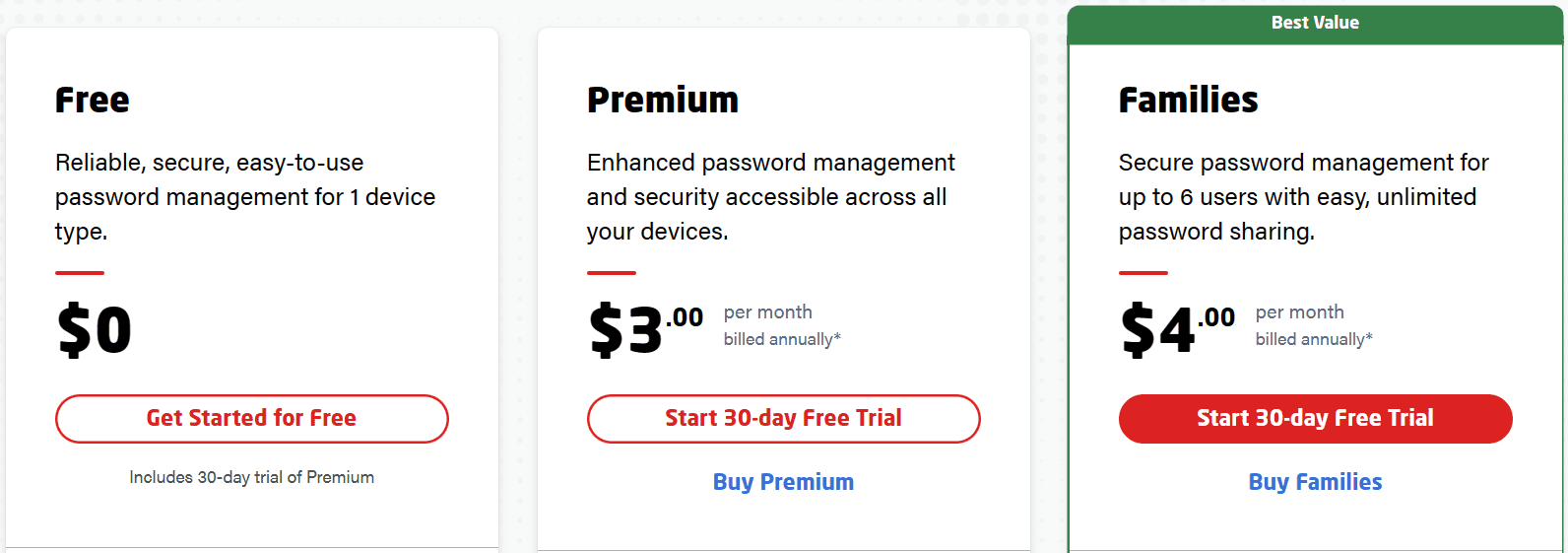
Neither is a bad value proposition, and both offer similar features and services (with the exception of Dashlane, which includes a VPN in its lowest-priced plan), so it comes down to which will cost you the least. And while the price difference for a family plan may be negligible, RoboForm is still technically more affordable on that count in addition to a significantly cheaper individual plan.
Winner: RoboForm takes the win by being more affordable overall.
Dashlane vs. RoboForm: Platform Compatibility
Platform compatibility winner: Draw | |
|---|---|
| Dashlane (5.0) | OS: Android, iOS, Linux, MacOS, Windows Supported browsers: Brave, Chrome, Edge, Firefox, Opera, Safari |
| RoboForm (5.0) | OS: iOS, Android, Windows PC, Linux, ChromeOS Supported browsers: Firefox, Chrome, Safari, Edge |
Both RoboForm and Dashlane are compatible with a variety of platforms, including all of the most popular web browsers and operating systems.
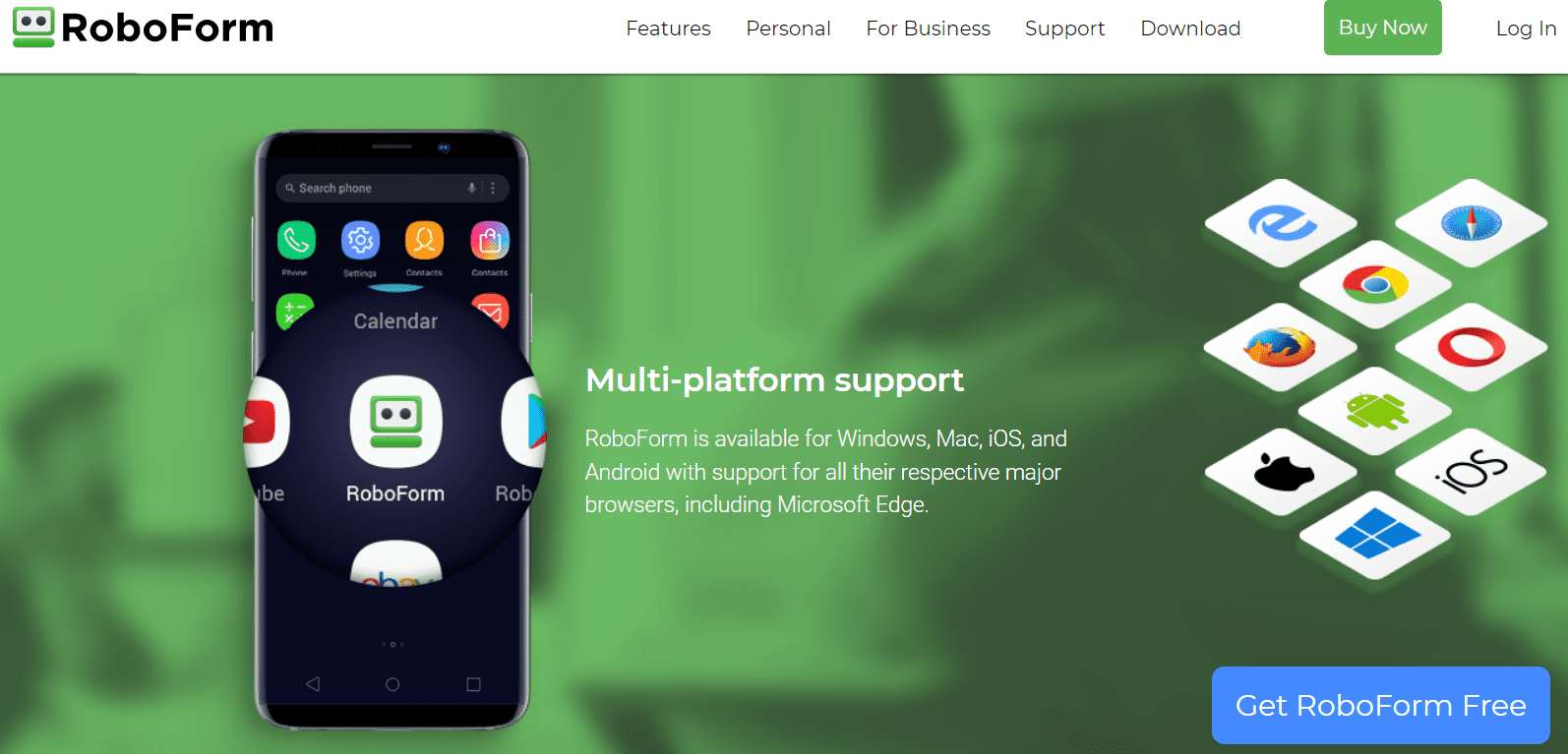
Dashlane is technically available on a broader range of platforms and browsers than RoboForm, but it’s not by a wide enough margin to give it a significant edge. Both are available in the Google Play store, meaning they can be added to devices like Kindles. Dashlane works with older versions of Android and iOS, which can be useful to some.
RoboForm doesn’t have a stand-alone application for MacOS like Dashlane, but in our testing, the browser extension for Safari performed just as well, if not better. I found little reason to install anything besides the browser extension with RoboForm, which helps immensely with cross-compatibility. If you’re running a supported browser, it doesn’t care what OS you’re using.
Winner: Tie: Both are equally capable and compatible with most major platforms.
Dashlane vs. RoboForm: UX
UX winner: Dashlane | |
|---|---|
| Dashlane (4.7) | Dashlane has a simplistic, easy-to-navigate platform, and no one will be left wondering how to use it. |
| RoboForm (4.0) | RoboForm’s UX is minimal — in a good way. It’s easy to navigate without getting lost. But I can’t say the same for its stand-alone app. |
Both RoboForm and Dashlane offer browser extensions and mobile apps as their main implementations, with a simple-to-navigate user experience (UX).
Dashlane has an easy-to-navigate platform. I found that its desktop app offered one of the cleanest, most visually appealing interfaces I’ve encountered in a password manager.
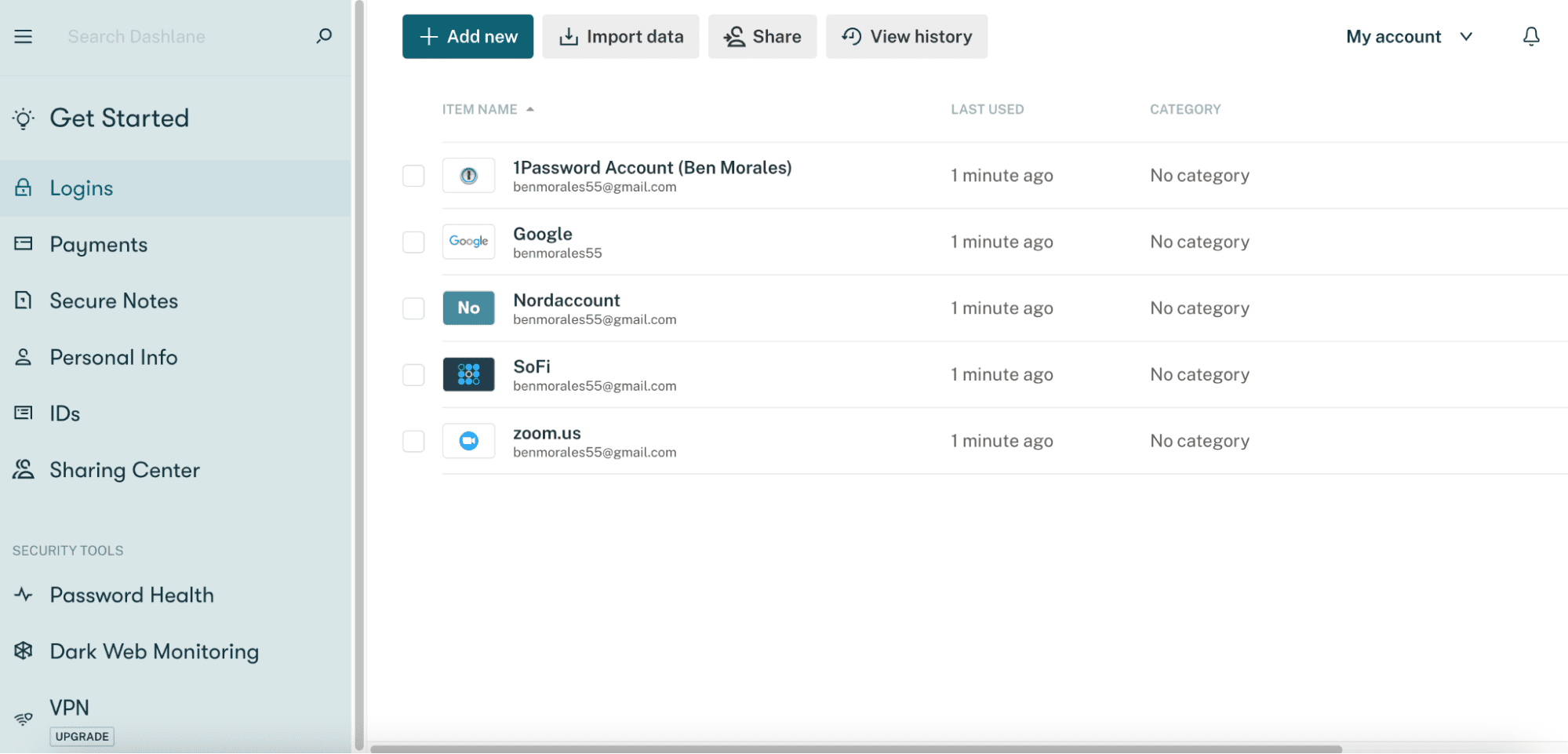
On the other hand, I found its browser extension quite congested. Dashlane essentially packed its desktop interface into the extension. While some may find this helpful, I only used the extension to quickly add or retrieve passwords, so it felt a bit overkill.
RoboForm’s browser extension is also minimal — I wasn’t overwhelmed with options. The current app has four main sections in the left toolbar to help you manage your account: All, Logins, Safenotes, and Create Identity.
The stand-alone application, however, felt messier and harder to navigate. While there are useful additions such as “Contacts” and “Bookmarks,” the folder structure feels outdated, clunky, and potentially confusing. With the availability of the browser extension and its better UX, it’s hard to recommend the stand-alone application.
Winner: Dashlane has a cleaner interface across almost all of its implementations, earning it the win for the UX category.
Dashlane vs. RoboForm: Form Filling
Form filling winner: Dashlane | |
|---|---|
| Dashlane (4.7) | I found no difficulty with the password or username autofill |
| RoboForm (4.5) | Creating data sets for automatic form filling is a breeze, thanks to the “Create an Identity” feature |
Both Dashlane and RoboForm offer robust form-filling — including logins, addresses, and credit card information — on both desktop and mobile.
Most people should find Dashlane’s built-in sections more than adequate. Logins, payment information, addresses, and IDs can all easily be inputted and auto-filled.
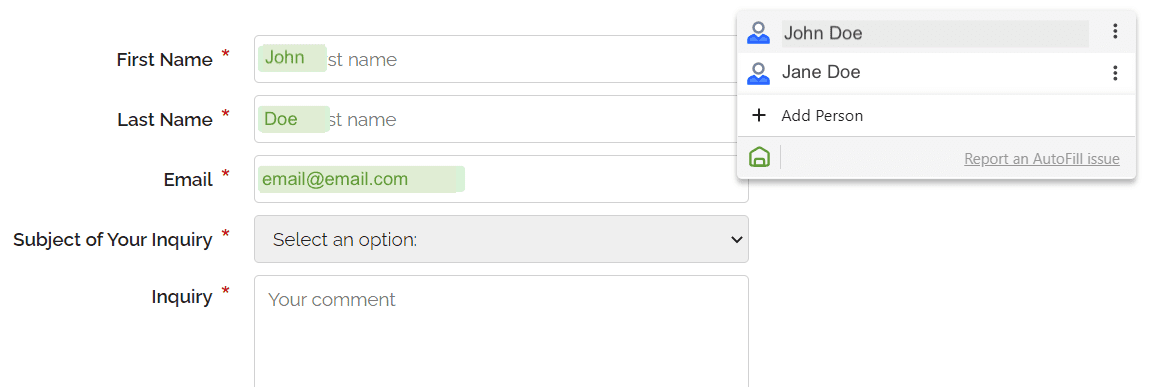
RoboForm’s automatic form-filling works consistently — the ability to preemptively create data sets gives you a greater level of control over the process. When navigating to an online form, RoboForm will ask which identity you want to use and will populate the form using that particular identity’s data set.
When push comes to shove, though, Dashlane gave me more options for input, which gave me more control over the form-filling process.
Dashlane vs. RoboForm: Security
Security winner: Dashlane | |
|---|---|
| Dashlane (4.7) |
|
| RoboForm (4.5) |
|
Most password managers, including Dashlane and RoboForm, use powerful 256-bit AES encryption, and both their vaults are unlocked on your device only after you’ve entered your master password.
Dashlane’s security stands out, though, with two unique offerings:
- Live dark web monitoring
- VPN
While many password managers offer dark web monitoring, few offer Dashlane’s live version. When Dashlane detects your information on the dark web, it notifies you in real-time. This is a useful feature because such matters can be timely.
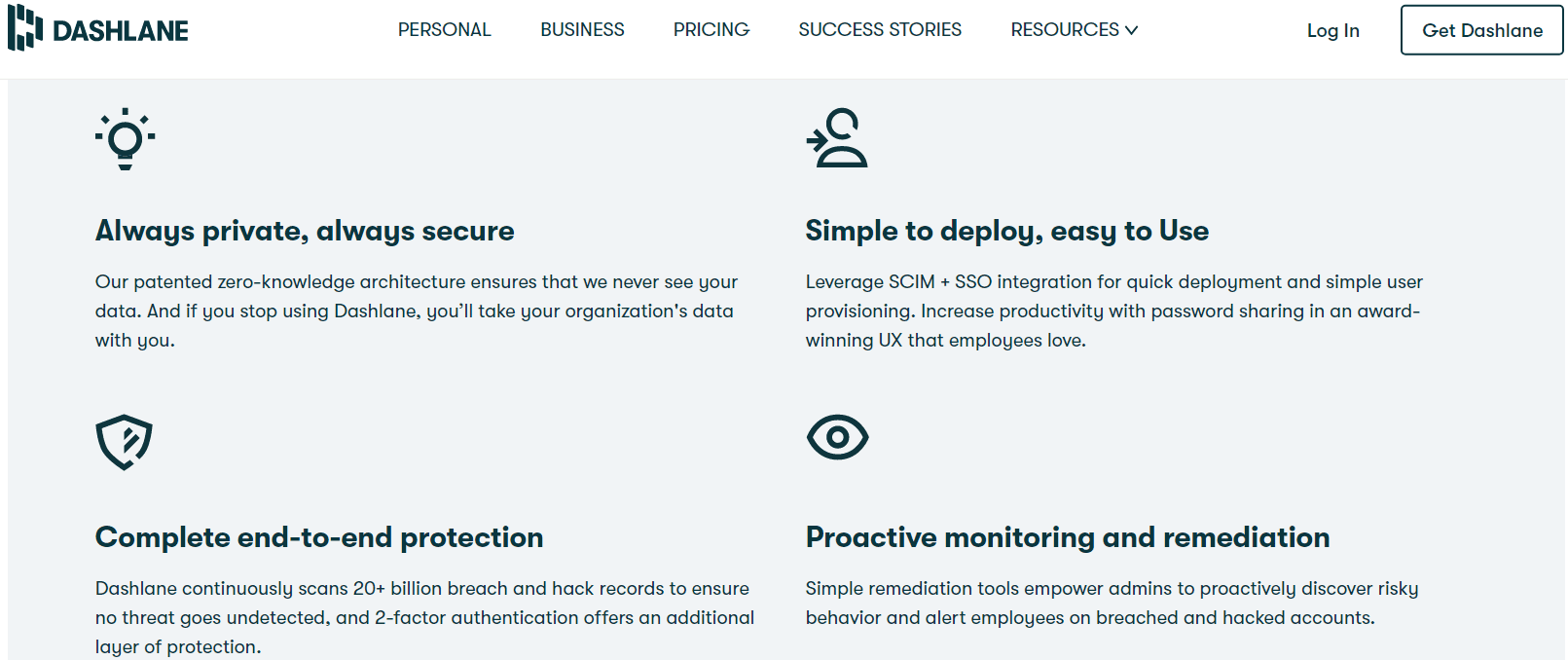
RoboForm also has several ways to keep your data secure. The first is its “master password” system, which encrypts your passwords and information directly on your device, not its servers. RoboForm cannot access your data because that password is stored directly to your device and never transmitted to the servers.
RoboForm’s security center will also alert you to potential data breaches at websites where you have accounts, as well as evaluate your current passwords for redundancy and strength. In the end, it’s not enough to compete with what Dashlane offers.
Winner: Dashlane wins by offering more security options and dark web monitoring.
Dashlane vs. RoboForm: 2FA
2FA winner: RoboForm | |
|---|---|
| Dashlane (4.2) |
|
| RoboForm (4.5) |
|
Love it or hate it, multifactor authentication (MFA) is here to stay. With data leaks common, sometimes a simple password just isn’t enough — so RoboForm and Dashlane allow you to add an additional layer of security with MFA.
Dashlane’s implementation of 2FA is limited to a first-party authenticator app, which is not my preferred method of 2FA. I usually prefer biometric or SMS authentication, options that many competitors offer. It’s surprising that Dashlane’s 2FA is limited to just authenticator apps. Introducing biometric or SMS authentication would make it an even more competitive option.
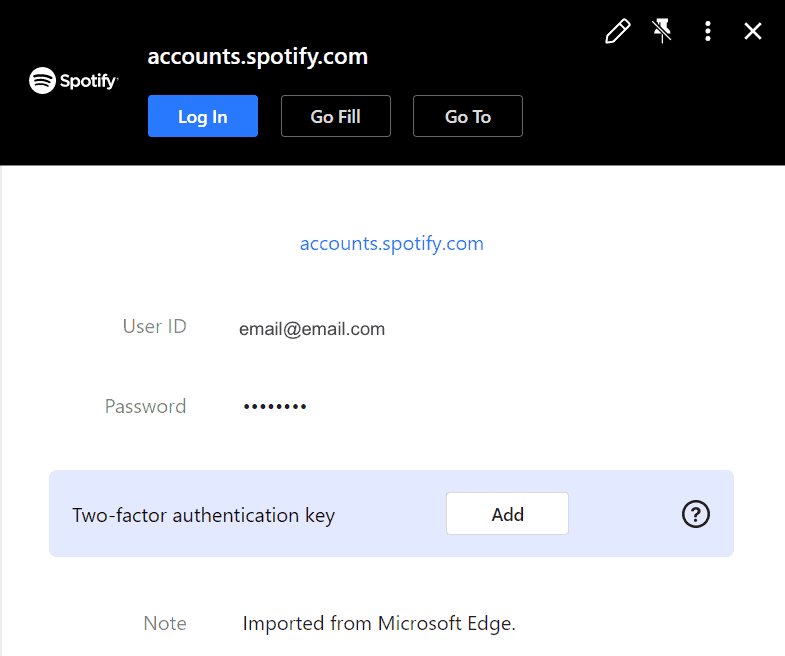
The same is true for RoboForm — I would have liked to have seen more 2FA options, but what is there works well. RoboForm offers more authenticator support which gives it a slight edge over Dashlane.
Winner: Both only offer app authentication, but RoboForm offers compatibility with more third-party authenticators.
Should You Get Dashlane or RoboForm?
Bottom line winner: Dashlane | |
|---|---|
| Dashlane (4.7/5) |
Best for: Those who want more premium features |
| RoboForm (4.5/5) |
Best for: Those looking for a well-designed browser extension |
RoboForm still has a slight price advantage over Dashlane, though RoboForm’s features are a bit more limited when compared against Dashlane’s robust security features and add-ons.
Both password managers are truly great, though — Dashlane is one of the best password managers of 2023, and RoboForm is among the best free password managers. And, as with any recommendation, your mileage may vary. That’s one of the benefits of both companies offering free versions — you can try them before committing to a paid plan. While I liked that Dashlane offers a VPN service and dark web monitoring with some plans, you may not need such things and may opt for the cheaper option.
There is no bad choice to be made in this case. Both RoboForm and Dashlane are excellent options for password management.
How I Evaluated Dashlane vs. RoboForm
On the surface, all password managers essentially generate and store passwords. As I evaluated providers, I dug deeper, comparing software on what matters most, including price, platform compatibility, security, and other factors.
I signed up for a plan with each provider to test:
- Plan value: Most password managers offer various subscription plans from free to around $20 per month. While free plans may be sufficient for some, those that need more functionality may prefer paid plans. We included a wide array of free, paid, and inexpensive password managers to find the one that works best for you.
- Platform compatibility: You likely access your online accounts from multiple devices, including desktops, laptops, tablets, phones, as well as through different web browsers. Your password manager should be compatible with various devices, operating systems and browsers, and sync seamlessly between them all.
- UX: This is how you interface with all the features and functions of your new password manager — if it’s bad, you’ll be less likely to use the service. While this is a highly subjective category and some will disagree, it’s important to provide an overview based on my experience.
- Form filling: A password manager doesn’t have to include form-filling, but it’s somewhat standard and the ease with which it performs that function can be the deciding factor in which password manager you ultimately choose.
- Security: Since a password manager is first and foremost a security tool, it should come with all of the most up-to-date standard security features. This includes the highest level of available encryption (256-bit AES with PBKDF2-HMAC-SHA512); 2FA, such as biometric logins or MFA, and a password generator.
- Two-factor authentication (2FA): Used all over the internet to protect your accounts, this is quickly becoming a standard security practice. 2FA is a great way to secure more sensitive accounts to ensure they’re not breached.
Learn more about our review methodology.

About the Password Manager, Gunnar Kallstrom:
Kallstrom is a Cyber Team Lead for a Department of Defense (DOD) contracting company in Huntsville, Alabama, and has also worked as a computer network defense (CND) Cyber Analyst. An author and content creator for a cybersecurity academy, Kallstrom spent nearly 15 years in the Army as a musician before entering the cybersecurity field.
He holds a bachelor’s degree in music from Thomas Edison State University and a master’s in organizational development and leadership from the University of the Incarnate Word.
Kallstrom has completed several Computing Technology Industry Association (CompTIA) courses, including Security+, Network+, A+ Core 1, and A+ Core 2. He earned a CompTIA Security+ Certification. Additionally, he has completed the Cyber Warrior Academy program with more than 800 hours of hands-on, intensive, and lab-driven technical training in cybersecurity methods and procedures.
Passionate about all things cyber, Kallstrom was a speaker on a panel at the 2022 InfoSec World conference, giving a talk entitled “Hacking into a Cyber Career – True Stories.” Kallstrom is also a mentor to entry-level cybersecurity candidates seeking to break into the field. When he’s not working, he still enjoys playing guitar and fishing (not phishing).



